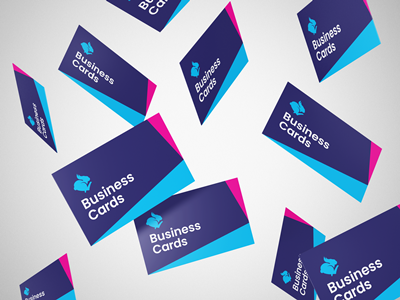The Importance of Business Cards |
Discover how to design effective business cards for your brand with our comprehensive guide, covering key elements, design tips, and the importance of professional presentation for networking success. |
In today's digital age, it's easy to overlook the importance of a physical business card. However, these small yet powerful marketing tools can make a lasting impression on potential clients and partners. A well-designed business card not only reflects your brand's personality but also communicates professionalism and credibility. |
Business cards are essential when it comes to networking, as they allow you to quickly and effectively share your contact information with others. They also serve as a tangible reminder of your encounter, making it more likely for potential clients or partners to remember you and your brand. |
Key Elements of a Great Business Card |
Simplicity and Readability |
An effective business card design should be simple and easy to read. Avoid cluttering your card with too much information or graphics. Instead, focus on the essential details, such as your name, title, company name, contact information, and logo. |
Investing in high-quality materials is crucial when designing your business cards. A durable, premium-quality cardstock will not only make your card look and feel professional but also leave a lasting impression on recipients. |
|
|
Your business card should be consistent with your brand's identity. Ensure that the colors, fonts, and design elements align with your existing marketing materials, such as your website and social media profiles. |
|
|
Relevant Contact Information |
Include only the most relevant contact information on your business card, such as your phone number, email address, and website. Avoid adding unnecessary details that can make your card look cluttered and unprofessional. |
|
|
The colors you choose for your business card can have a significant impact on how it's perceived. Use color psychology to select hues that evoke the emotions and associations you want to convey, such as trust, reliability, or creativity. |
|
|
Your choice of typography can make or break the overall look and feel of your business card. Opt for clean, legible fonts that are easy to read, and avoid using too many different typefaces. Remember to maintain consistency with your brand's typography. |
|
|
Incorporating white space into your business card design can enhance readability and create a balanced, visually appealing look. Don't be afraid to leave some empty space on your card, as it can help draw attention to the essential information. |
|
|
Including a Call to Action |
A clear call to action (CTA) can encourage recipients to take the next step, whether that's visiting your website, giving you a call, or connecting with you on social media. Be concise and specific with your CTA, and ensure it aligns with your overall business goals. |
|
|
Using a double-sided design can provide you with additional space to include more information, such as your social media handles, a brief description of your services, or even a QR code that directs users to your website. However, be mindful not to overcrowd the card, and maintain a clean, professional design. |
|
|
Designing an effective business card is an essential aspect of building a strong brand. By focusing on simplicity, readability, high-quality materials, consistent branding, and relevant contact information, you can create a business card that leaves a lasting impression on recipients and helps you establish valuable connections. |
|
|
Creating a business card that stands out and effectively conveys your brand image can be challenging, but following these tips can make the process easier. Remember to focus on the purpose of your business card, choose the right format and design, craft a clear and compelling message, and proofread and edit your business card thoroughly. With these tips, you can create a business card that effectively delivers your message and helps you attract new customers. |
|
|
1. What size should my business card be?
|
Standard business card dimensions are 3.5 inches by 2 inches. However, you can opt for a different size or shape depending on your design preferences and brand identity. |
|
|
2. Should I use a professional designer to create my business cards? |
While you can use online design tools to create your business cards, working with a professional designer can ensure a polished, high-quality result that aligns with your brand's overall identity. |
|
|
3. How many business cards should I order?
|
The number of business cards you need depends on how often you network and attend events. It's always better to have more cards than you think you'll need to ensure you don't run out during crucial networking opportunities. |
|
|
4. What information should I leave off my business card? |
Avoid including personal information, such as your home address or social security number, as well as any outdated or irrelevant contact information. |
|
|
Can I use a QR code on my business card?
|
Yes, including a QR code on your business card can be an effective way to direct recipients to your website or social media profiles. Just ensure the code is easily scannable and doesn't clutter your design. |
|
|
|

